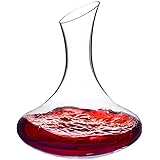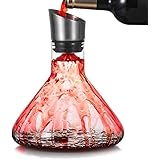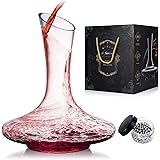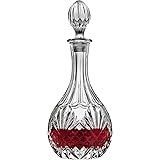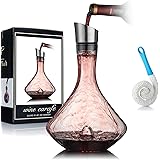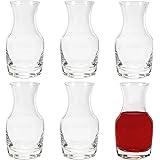With an average customer rating often exceeding 4.5 stars and the promise of crafting up to 30 bottles of wine from a single kit, the appeal of home winemaking is undeniable. Many enthusiasts are discovering the satisfaction and cost-effectiveness of producing their own vintages right at home. The video above provides a concise overview of some of the top wine making kits available in the USA. However, the journey to becoming a confident home vintner often requires a deeper understanding of what these kits entail and how to choose the option best suited for individual aspirations.
Home winemaking, for many, begins with the selection of a quality kit. These comprehensive packages are meticulously designed to simplify the initial stages of wine production, making the hobby accessible to both novices and those with some prior brewing experience. The careful consideration of various kit types and their components is paramount for a successful and enjoyable winemaking endeavor.
Embracing the Art of Home Winemaking: More Than Just a Hobby
The decision to delve into home winemaking is often driven by a multitude of factors, extending beyond simple curiosity. It is reported that the global homebrewing market, which includes winemaking, has seen consistent growth, indicating a significant interest in DIY beverage production. Crafting wine at home provides a unique blend of creative expression, economic advantage, and the sheer joy of sharing a personalized product.
One primary benefit is the significant cost savings that can be realized over time. While an initial investment in a quality wine making kit is required, the per-bottle cost of homemade wine is often dramatically lower than retail purchases, especially for comparable quality. Furthermore, the ability to customize flavor profiles and ingredients allows for a level of experimentation not typically found in commercially produced wines. The satisfaction derived from producing a delicious vintage, knowing every step of its creation, is an often-cited reward among home vintners.
Demystifying Wine Making Kits: Essential Components Explained
A typical DIY wine kit is carefully assembled to provide nearly everything required to transform juice or concentrate into fermented wine. These kits are generally categorized by what they include: some offer full equipment sets, while others provide only the specialized ingredients. Understanding the core components is crucial when evaluating which kit aligns with one’s needs.
Fermentation vessels are a foundational element of any kit; these are often large plastic buckets or glass carboys, sometimes described as “Big Mouth Bubblers” for their wide openings. A larger opening simplifies the cleaning process and the addition of ingredients. Historically, glass carboys have been preferred for their non-porous nature, preventing oxygen ingress and making them suitable for longer-term aging, whereas food-grade plastic fermenters are often chosen for their lighter weight and durability.
Another critical component is the airlock, which permits carbon dioxide to escape during fermentation while preventing outside air from entering the vessel. Siphons, typically accompanied by hoses and clamps, facilitate the transfer of wine between vessels, a process known as racking, which helps to separate the wine from sediment. Lastly, the ingredient kits themselves are pivotal, often comprising high-quality wine concentrate, specific yeast strains, clarifiers, stabilizers, and sometimes oak chips for enhanced flavor profiles. It is through the synergistic action of these components that fermentation is meticulously managed, leading to a refined alcoholic beverage.
Varieties of Wine Making Kits: Choosing Your Path
The market for home winemaking kits is diverse, reflecting the varied preferences and skill levels of enthusiasts. A common distinction can be made between equipment-only starter kits, ingredient-focused kits, and comprehensive all-in-one packages.
-
Equipment Starter Kits: These kits, such as the Master Vintner Wine Making Equipment Starter Kit, are ideal for beginners who need all the hardware to begin. Typically, they include fermenters, carboys, airlocks, hydrometers, siphons, and cleaning supplies. Ingredient kits are often purchased separately, allowing the user to select their preferred wine style after acquiring the foundational equipment. The stated purpose of such kits is to deliver finished wine faster, often emphasizing the ease of setup and use for new users.
-
Ingredient Wine Kits: For those who already possess the necessary equipment, ingredient kits like Wild Grapes Premium DIY Wine Making Kits or Vieux Chateau Du Roi (Petite Shiraz Blend) are excellent choices. These packages contain the concentrated grape juice, yeast, and other additives required to produce a specific type of wine. Many of these kits promise a relatively quick fermentation period, with wine often being ready in approximately four weeks. The high quality of ingredients is often highlighted, as this directly influences the final taste and aroma of the wine.
-
Fruit-Based Kits: Kits such as the North Mountain Supply 3 Gallon Wine from Fruit Complete Kit specifically cater to those who wish to make wine from fresh fruit rather than concentrate. These kits typically include all the necessary equipment and ingredients (except the fruit itself and bottles), along with detailed instructions and often a recipe handbook. This approach allows for greater creativity and the utilization of local or seasonal produce, connecting the vintner more intimately with the winemaking process.
-
Specialty Kits: Beyond grape-based wines, specialty kits like the Shepherd Made Mead Making Kit offer exploration into other fermented beverages. Mead, an alcoholic beverage made from honey, water, and yeast, presents a different flavor profile and brewing experience. Such kits broaden the scope of home beverage crafting, appealing to those with diverse palates.
Key Considerations When Selecting Your Wine Making Kit
When selecting from the many wine making kit options available, several factors should be carefully weighed to ensure a rewarding experience. The projected yield of the kit is a significant practical consideration; kits can range from 1-gallon batches, yielding approximately five 750ml bottles, to 6-gallon batches, which can produce around 30 bottles. Smaller kits are ideal for beginners wishing to experiment without committing to a large volume, while larger kits offer better economy for established enthusiasts.
The type of wine desired is another crucial aspect. Kits are available for various red, white, and rosé wines, often specifying varietals such as Merlot or Cabernet Sauvignon. Some kits are designed for speed, promising drinkable wine in as little as four weeks, while others might involve longer aging processes for more complex flavors. Finally, the inclusion of clear, step-by-step instructions and access to customer support, as highlighted by some kit descriptions, can be invaluable for ensuring a smooth winemaking journey, particularly for those new to the craft.
Regardless of the chosen kit, meticulous sanitation protocols are paramount throughout the winemaking process. All equipment that comes into contact with the wine must be thoroughly cleaned and sanitized to prevent contamination, which can lead to off-flavors or spoilage. Consistent adherence to temperature guidelines during fermentation is also critical, as yeast performance is highly sensitive to environmental conditions. By paying close attention to these details, the chances of producing a top-quality, enjoyable homemade wine are significantly increased.


